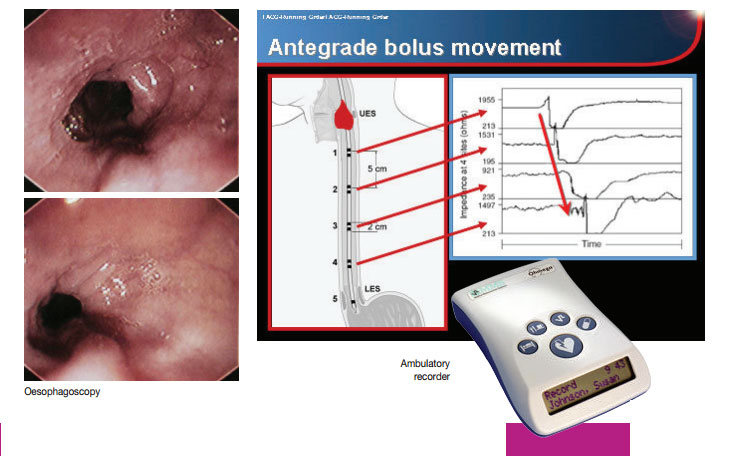pH-Impedance testing in Gastro-oesophageal reflux
Mario Stellini
 Gastro-Oesophageal Reflux Diseases (GORD) are one of the most common reasons for physician consultation. Out of 2,056 individuals randomly surveyed in the United States and Canada, up to 35% had more than one upper gastrointestinal symptom occurring at least once per week with at least moderate intensity.
Gastro-Oesophageal Reflux Diseases (GORD) are one of the most common reasons for physician consultation. Out of 2,056 individuals randomly surveyed in the United States and Canada, up to 35% had more than one upper gastrointestinal symptom occurring at least once per week with at least moderate intensity.
Investigation of GORD has evolved over the years. It started with the use of barium meals and swallows. These could directly observe the regurgitation of stomach contents back into the oesophagus but were not very good at assessing the damage caused by this reflux. The widespread use of endoscopy enabled direct visualisation of the oesophagitis and any ulceration. However, it was only in the mid 70’s that it was realised that many patients with symptoms of GORD did not have any oesophagitis. Thus the concept of nonerosive reflux disease (NERD) arose.
NERD symptoms are related to the exposure of the lower oesophagus to either acid refluxate or else to nonacidrefluxate from the duodenal and intestinal secretions. Management of acid and non-acid reflux is very different and diagnosis and differentiation of the two conditions can only be made by pH and impedance testing.
pH-Impedance
Testing This is performed by using a 2.1 mm diameter catheter upon which there are multiple pH and impedance sensors. The catheter is inserted through the nose and is attached to a recorder. The recorder also has buttons which the patient can use to record events such as symptoms, drug ingestion, eating and lying in the supine position.
An impedance sensor basically measures resistance between two probes placed close to each other. Thus it can detect the presence of fluid which will decrease resistance between the probes. Multiple impedance sensors placed along the length of the catheter will not only determine the presence of fluid within the oesophagus but will also show whether this fluid is moving up from the stomach or whether it has been swallowed. The pH sensors determine if the refluxate is acidic or non-acidic.
A pH-impedance recording allows reflux episodes to be classified into liquid only, gas only or mixed. It can determine the height of the reflux and quantifies the number of gastrooesophageal reflux episodes. It demonstrates the oesophageal acid exposure time and facilitates analysis of the relationship between symptoms and all types of reflux events, both acidic and non-acidic.
Whilst acid reflux often responds to a proton pump inhibitor, non-acid reflux does not and may require surgery.


